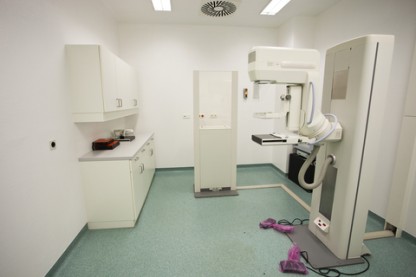Breast Cancer Screening: Mammogram Risks and Alternative Options
 Is radiation from mammograms dangerous? How often should you get a breast screening? Are alternatives like thermography effective? Many women are burdened with questions like these when trying to make choices about breast cancer screening. Review some of the facts about breast cancer screening to help make an educated decision.
Is radiation from mammograms dangerous? How often should you get a breast screening? Are alternatives like thermography effective? Many women are burdened with questions like these when trying to make choices about breast cancer screening. Review some of the facts about breast cancer screening to help make an educated decision.
Mammogram risks and benefits
Breast cancer is one of the most common forms of cancer in women in the US.[1] Mortality from breast cancer has reduced significantly since 1990, with mammogram screening accounting for about half of that reduction.[2] Clearly, breast screening is a valuable tool in monitoring breast health and protecting against breast cancer. However, mammography is not a perfect system: along with the discomfort during the exam, mammography as a breast cancer screening tool has significant drawbacks.
- Low doses of radiation during a mammogram screening can be a concern for many women. Many researchers conclude that the risk of mammograms causing breast cancer is the same as the annual natural risk of getting breast cancer; one source even states that, “the radiation dose applied during a screening mammogram cannot be considered an argument against screening mammography.”[3] Although the risk may be minimal, limiting radiation exposure is an important factor to consider. One study estimates that as many as 30 radiation-induced breast cancers can occur in 100,000 women screened biennially for 10 mammograms.[4]
- False positives rates are high. About 75% of breast biopsies are caused by suspected abnormalities in breast tissue that ends up being benign.[1] Many studies show that over 10 years of annual screening, 50% of women will have a false positive mammogram,[2] which can lead to unnecessary worry, painful procedures, and more.
- Over-diagnosis occurs when a mammogram detects cancerous abnormalities that would never have become a problem in the woman’s lifetime. The abnormal tissue would not have caused symptoms or any danger if it had not been detected.[5] Over-diagnosis can harm the woman both emotionally and physically; unnecessary treatments can take a physical toll and the anxiety associated with cancer can be a major detriment to quality of life.
Alternatives and complimentary tools
A major effort has been made to develop alternative breast screening methods, which could reduce mammogram risks. MRIs can be used to screen breast tissue, along with ultrasonography. While neither of these methods expose women to radiation, they are not accurate enough to stand alone as diagnostic tools, and are instead considered adjuncts to mammography.[1]
Is thermography a better option?
A new popular form of breast screening is thermography, which measures the temperature in the body using infrared imaging. Thermography presents many advantages over mammography.
- It is relatively inexpensive.
- It does not emit radiation.
- It is painless.
- It offers the possibility of detecting pre-cancerous tissue long before abnormalities can be detected by mammography. Warning a patient of these changes allows them the time to address and reverse the imbalance through diet, supplementation, and other lifestyle changes, preventing the formation of a tumor naturally.
One study showed 97% accuracy using digital infrared thermal imaging,[6] and another found that thermography actually had better results and higher sensitivity than mammography.[7]
At present, thermography is generally not approved as a replacement for mammography, but is used in combination with mammography. However, with more research and fine-tuning of technique, thermography has the potential to become a safer alternative to mammography.
Making a personal decision
There are many factors to consider when choosing how and when to get breast screening. In the past, it was recommended that women over the age of 50 get screened every two years, but more recent recommendations suggest women over the age of 40 get screened every year. However, there is disagreement among parties, and these standards vary largely. Ultimately, “breast cancer screening tailored to a woman’s risks and preferences, with the goal of maximizing benefit and minimizing harm, holds the most promise.”[2]
So how do you choose what is right for you? The frequency of screening should be different for a young woman with many risk factors compared to an older, healthy woman with little risk. Don’t be afraid to stand up for your values and preferences, and make sure that the tests you get are absolutely necessary to minimize mammogram risks.
If you want to avoid radiation as much as possible, you likely do not have to get a mammogram every year. You may choose to alternate thermography and mammography, or you may choose to wait until you are 50 to start getting screened. Talk to your doctor about the risks and benefits of the different options and find a plan that makes you comfortable. Use the NHA Physician Directory to find a doctor who uses thermography near you.
Share your experience
Please share your thoughts and experiences on mammography and thermography in the comments section below. What choices have you made and why?
[1] J Turk Ger Gynecol Assoc. 2010 Sep 1;11(3):152-157.
[3] Geburtshilfe Frauenheilkd. 2013 Oct;73(10):1007-1016.
[5] BMJ Open. 2014 May 15;4(5):e004990.


 Savor the Sweet Potato
Savor the Sweet Potato  Swollen Lymph Nodes in Your Neck: What You Need to Know
Swollen Lymph Nodes in Your Neck: What You Need to Know 